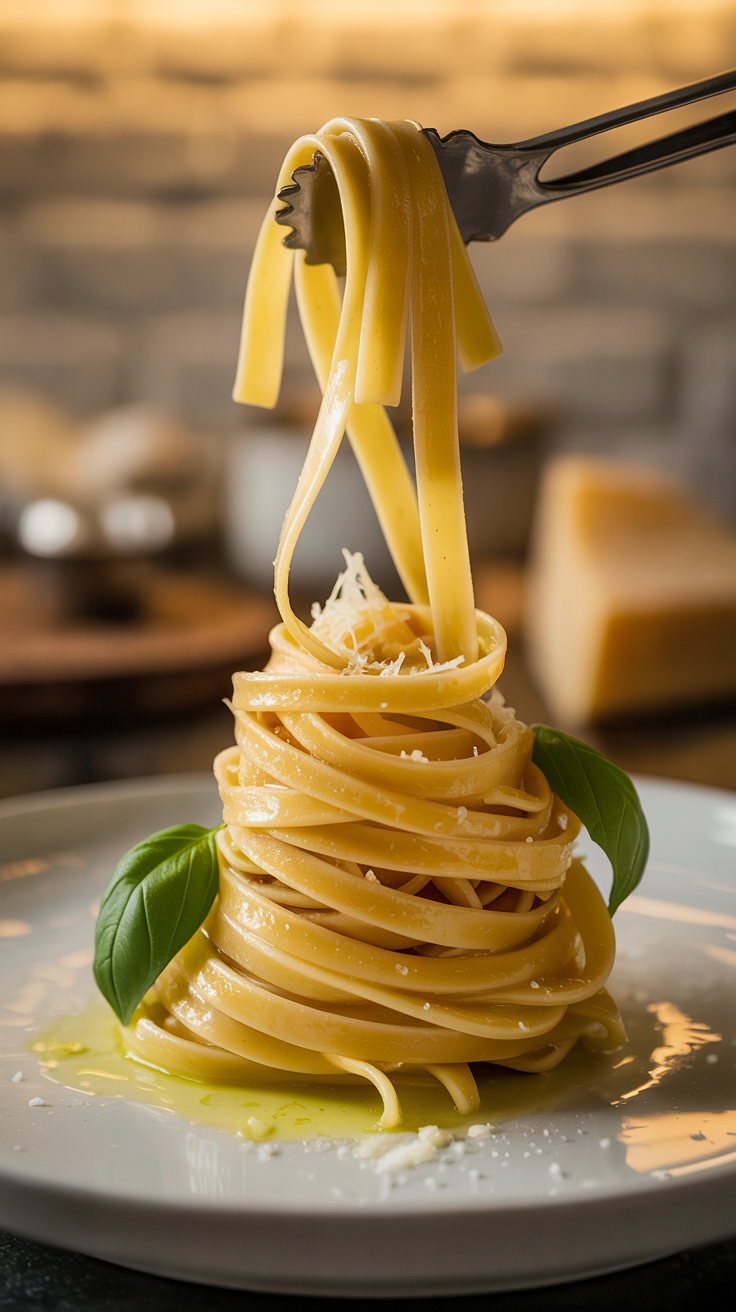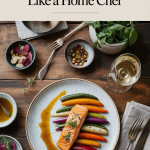From Kitchen to Table: How to Style Your Meals Like a Home Chef
Styling food isn’t just for restaurant chefs, cookbook photographers, or glossy magazine editors. It’s a skill anyone can learn—and once you do, you’ll instantly elevate every meal you make. Whether you’re hosting friends, photographing a dish for social media, or simply wanting dinner to feel a little more special, learning how to style food like a chef transforms ordinary ingredients into something unforgettable.
The good news? You don’t need professional equipment, studio lighting, or a culinary degree. With a few guiding principles and some easy hacks, you can take any meal—from quick weeknight pasta to a Sunday roast—to “restaurant beautiful.”
This guide will walk you through everything you need to know: plating techniques, color theory, styling tricks, texture layering, garnishing, selecting the right dinnerware, and even lighting tips for capturing the perfect photo. By the end, you’ll be creating meals that look as good as they taste.
Let’s get started.
1. The Home Chef Mindset: See Your Plate as a Canvas
Before diving into techniques, the most important shift is mindset. Professional chefs and food stylists don’t see a plate as a vessel—they see it as a blank canvas. Each element of the meal becomes an opportunity to add color, texture, movement, and balance.
Here’s how to start seeing food like a home chef:
Focus on intention.
Don’t just place food on a plate—think about what story the dish tells. Is it rustic? Fresh? Comforting? Elegant?
Think about contrast.
Chefs rely heavily on contrast—color, shape, texture, temperature—to make a dish visually exciting.
Embrace negative space.
The food doesn’t need to cover the whole plate. A little space makes the dish feel refined.
Aim for balance, but not perfect symmetry.
Visual harmony comes from controlled imperfection. Slight offsets and organic placement feel more natural and more delicious.
When you adopt this mindset, even your simplest meals start looking intentional and restaurant-worthy.
2. Choose the Right Plate (It Matters More Than You Think)
Your plate is the frame for your food. Use it wisely.
White Plates: The Classic Choice
White dinnerware is the industry standard because it makes colors pop and works with any type of food. If your meals tend to be colorful—salads, roasted vegetables, pastas—white plates will showcase your ingredients beautifully.

Black Plates: Dramatic and Modern
Dark stoneware or matte black plates create contrast and mood. They’re stunning for light-colored foods: scallops, potatoes, chicken, soufflés.
Patterned Plates: Use Sparingly
A subtle border is fine, but all-over patterns compete with your food. If you love patterned pieces, reserve them for simpler meals.
Consider the Shape
Round plates feel classic and soft, while square or rectangular plates feel modern and can help with clean, structured presentation.
Bowl vs. Plate?
If your dish has height—like ramen, curries, or grain bowls—use a shallow bowl to keep ingredients contained and layered.
Size Matters
Smaller plates can make portions look more abundant and intentional; oversized plates allow for dramatic negative space.
Chef secret? Your plate sets the mood before the first bite.
3. Master the Rule of Thirds (The Secret Behind Beautiful Plates)
Borrowed from art and photography, the rule of thirds helps you create dynamic, balanced presentations.
Imagine your plate divided into three sections. Your goal is to anchor the dish in one or two of those sections—not the center.
Here’s how chefs use it:
Protein:
Place slightly off-center. This creates movement and visual interest.
Sides:
Place at angles or overlapping the main element for a layered look.
Sauces:
Use the negative space of the plate to drizzle, dot, or swoosh.
Applying the rule of thirds prevents food from looking plopped on the plate. It immediately looks thoughtful and elevated.
4. Build Height and Structure: Flat Food Looks Boring
One of the biggest mistakes home cooks make is plating everything flat. Adding height creates a restaurant-quality presentation instantly.
How to Add Height:
Stack strategically.
Place grains or a vegetable base first, then lean proteins or garnish upward.
Use layers.
Add soft elements (purees, rice) first, then firmer elements (meat, vegetables), and finish with fresh toppings (greens, herbs).
Lean or angle elements.
Instead of laying a slice of meat flat, prop it against your base.
Avoid the pancake effect.
Unless it’s actually a pancake, avoid squashing food.
Height makes a plate feel full, dimensional, and professional.

5. Use Color Intentionally: Vibrancy Makes Food Look Fresh
Color is one of the most powerful styling tools.
Use a Color Palette
A great plate typically has:
-
A main color (protein or carb)
-
A contrasting color (vegetables or garnish)
-
A fresh “pop” (herbs, citrus, edible flowers)
Think About Temperature Colors
Warm foods naturally lean golden, brown, red.
Fresh foods lean green, purple, bright red.
Pairing warm and cool tones creates visual appeal.
Add Fresh Elements Last
Even a simple dish gains instant life with:
-
sliced scallions
-
chopped herbs
-
shaved radish
-
microgreens
-
citrus zest

Avoid Brown-on-Brown
If your meal is mostly brown, lighten it visually with:
-
yogurt or sour cream
-
chopped parsley
-
pickled onions
-
colorful side elements
Color is the quickest fix for an unappealing plate.
6. Texture Layering: Your Secret Weapon for a Delicious-Looking Dish
A visually delicious meal depends on texture—it signals flavor before you take a bite.
Use Multiple Texture Types
Aim for at least three:
-
Crunch: nuts, breadcrumbs, seeds, crispy onions
-
Creaminess: sauce, yogurt, cheese
-
Freshness: herbs, greens, raw veggies
-
Tender elements: proteins, roasted vegetables
Contrast Wet and Dry
Crispy chicken next to creamy mashed potatoes = perfect.
Add Crunch at the End
Anything crispy should be added right before serving to avoid sogginess.
Play With Garnish Textures
Garnishes are not just visual—they can add a textural hit that makes the dish exciting.
Texture layering = instant gourmet vibes.
7. The Art of Garnishing Like a Chef
Garnishes should be purposeful, not random.
The Three Types of Garnishes That Always Work:
-
Fresh herbs
Dill, parsley, cilantro, basil, chives—small, bright sprinkles of green always add vibrancy. -
Microgreens
A chef-favorite for height and elegance. -
Edible flowers
Beautiful for desserts, salads, cocktails, and brunch plates.
Tips for Perfect Garnishing:
-
Keep garnishes small. A little goes a long way.
-
Place them intentionally, not sprinkled everywhere.
-
Use garnishes that match the flavors of the dish.
-
Add them at the very end to keep them bright.
Garnish is the finishing touch that transforms the plate.
8. Sauce Styling: Swooshes, Drizzles, and Dots
Sauce can make or break the elegance of your dish.

3 Easy Sauce Techniques Anyone Can Master:
The Swoosh
Put a spoonful of sauce on the plate, place the back of a spoon in it, and drag gently. Perfect for purees.
The Drizzle
Use a small spoon or squeeze bottle to zigzag or thread a thin line of sauce over the dish.
The Dot Technique
Perfect for thick, vibrant sauces. Alternate big and small dots for restaurant vibes.
Balance Is Key
Don’t drown the food. Use sauce as an accent or supporting element.

9. Plating by Cuisine: A Quick Guide
Different cuisines style food differently. Understanding these cues helps you plate in a way that fits the dish.
Italian
-
Rustic, imperfect, natural
-
Lots of color and olive oil drizzles
-
Height through pasta twirls
French
-
Clean presentation
-
Minimal but strategic sauces
-
Structured protein placement
Japanese
-
Harmony and minimalism
-
Color contrast
-
Balance of shape and texture
Mediterranean
-
Bright, fresh, herb-forward
-
Lots of small components
-
Casual yet colorful
American Bistro
-
Bold, generous plating
-
Comfort-food layers
-
Crispy-on-creamy textures
Using the right visual language elevates every dish you serve.
10. Making Everyday Meals Look Chef-Level
You don’t need special ingredients to make a weekday dinner look incredible.
Pasta
Twirl noodles around tongs before placing them on the plate. Add a sprinkle of cheese and chopped herbs.
Salads
Layer ingredients instead of tossing everything at once. Add something crunchy on top.

Bowls
Start with a base, then add ingredients in distinct sections. Finish with sauce drizzles and herbs.
Tacos
Prop ingredients upward. Add pickled onions for color.
Breakfast Plates
Stack pancakes, angle avocado slices, fan out berries, drizzle honey last.
Roasts or Grilled Food
Slice proteins and fan them for shape.
With a few styling moves, every casual meal looks intentional.
11. How to Style Food for Photos (Even With a Phone)
You don’t need a camera to take chef-worthy food photos.
Lighting
Natural light is best. Soft window light = magic.
Avoid:
-
overhead lighting
-
yellow light
-
harsh shadows

Angles
Best angles:
-
top-down (for flat dishes like pizza or pasta)
-
45-degree angle (general food shots)
-
straight-on (burgers, stacks, drinks)
Use Props
Add interest with:
-
linen napkins
-
rustic cutting boards
-
small bowls or fresh herbs nearby
Keep It Clean
Wipe plate edges. You’d be shocked how much this matters.
12. Seasonal Styling: Match Your Food to the Moment
Chefs think in terms of seasons. You can, too.
Spring
Bright greens, edible flowers, lighter plating styles.
Summer
Vibrant colors, fresh fruits, grilled textures.
Fall
Warm tones, hearty layers, root vegetables.
Winter
Rich sauces, herbs, deeper colors, comfort-food presentation.
Seasonal styling feels natural and visually intuitive.

13. Create a Signature Styling Style
Like fashion, food styling has personal style.
Think about:
-
Do you prefer earthy, rustic plating?
-
Clean and minimalist?
-
Colorful and abundant?
-
Bistro-style comfort?
Your signature style becomes your culinary “look.”
14. Final Touches That Transform Any Dish
Right before serving, do this:
-
Add a pinch of flaky salt
-
Drizzle olive oil
-
Add a fresh green element
-
Wipe the edges
-
Add height if needed
-
Check color contrast
These last touches are what make the final plate pop.
You Don’t Need to Be a Chef to Plate Like One
Food presentation is an art, but it’s also a practice. The more you try, the easier it becomes. Soon you’ll see your meals not just as nourishment, but as creative expressions—little moments of everyday beauty.
With these tools, techniques, and mindset shifts, you’re not just cooking.
You’re crafting experiences, one plate at a time.


